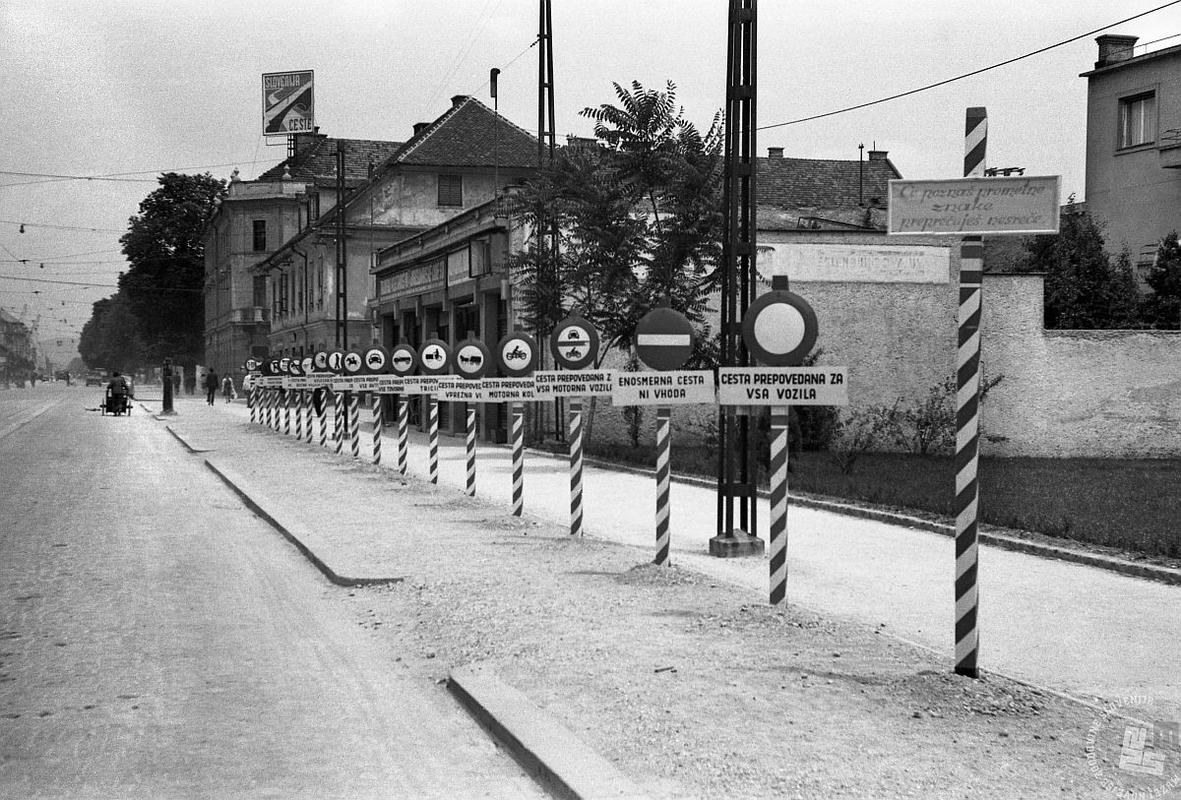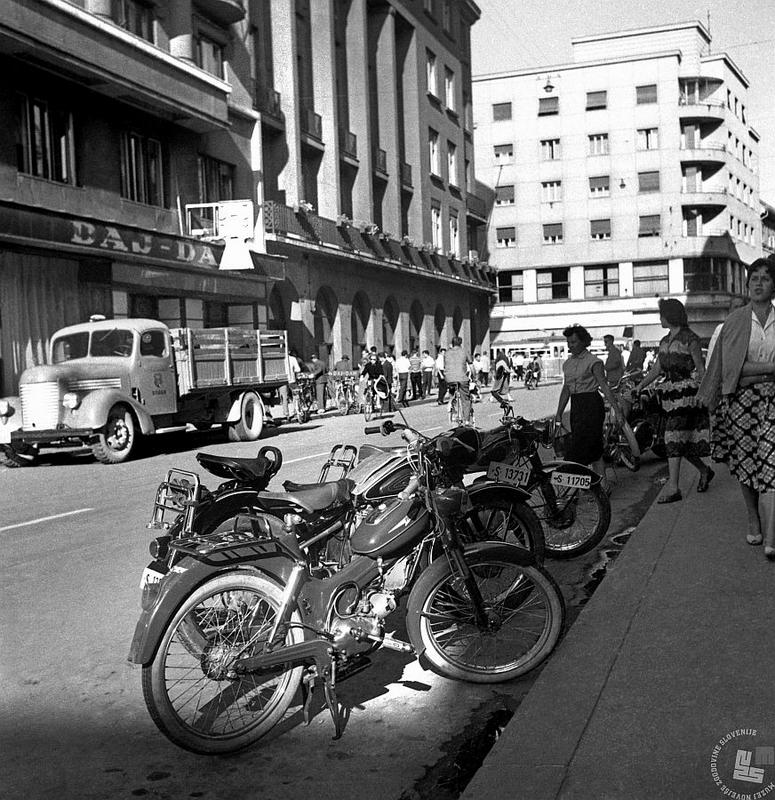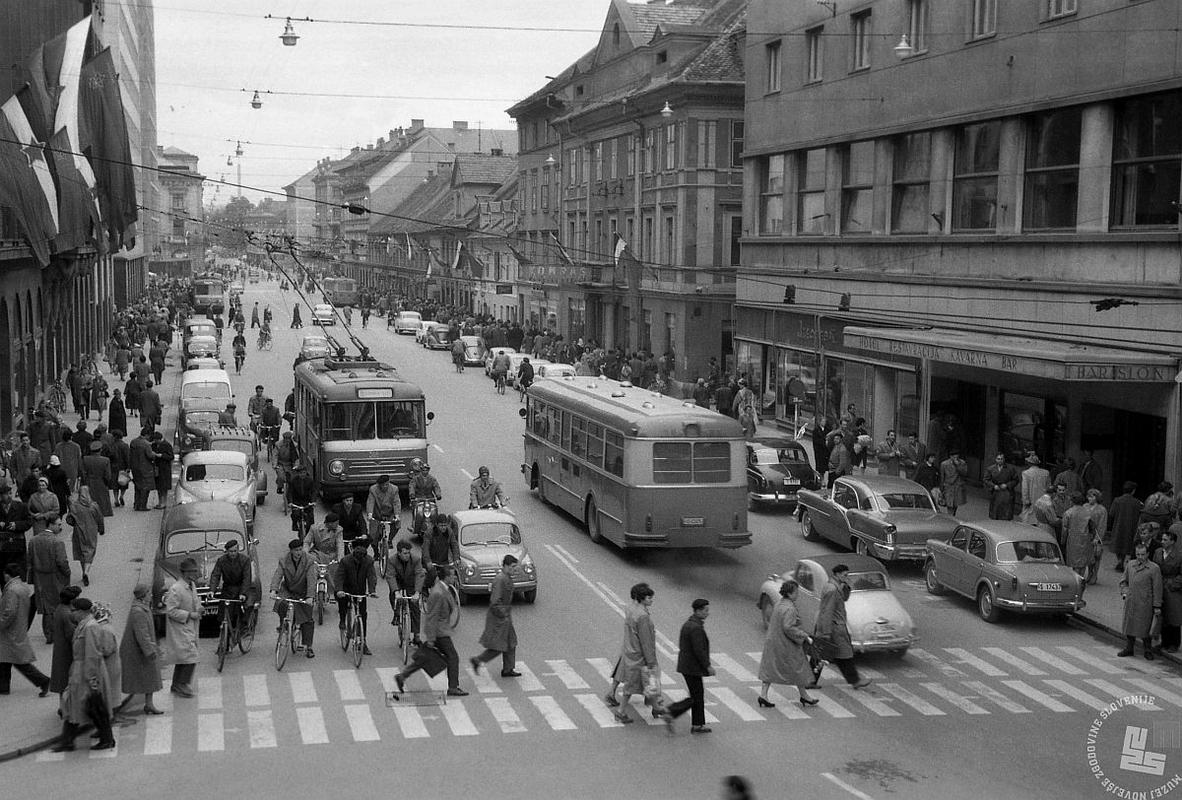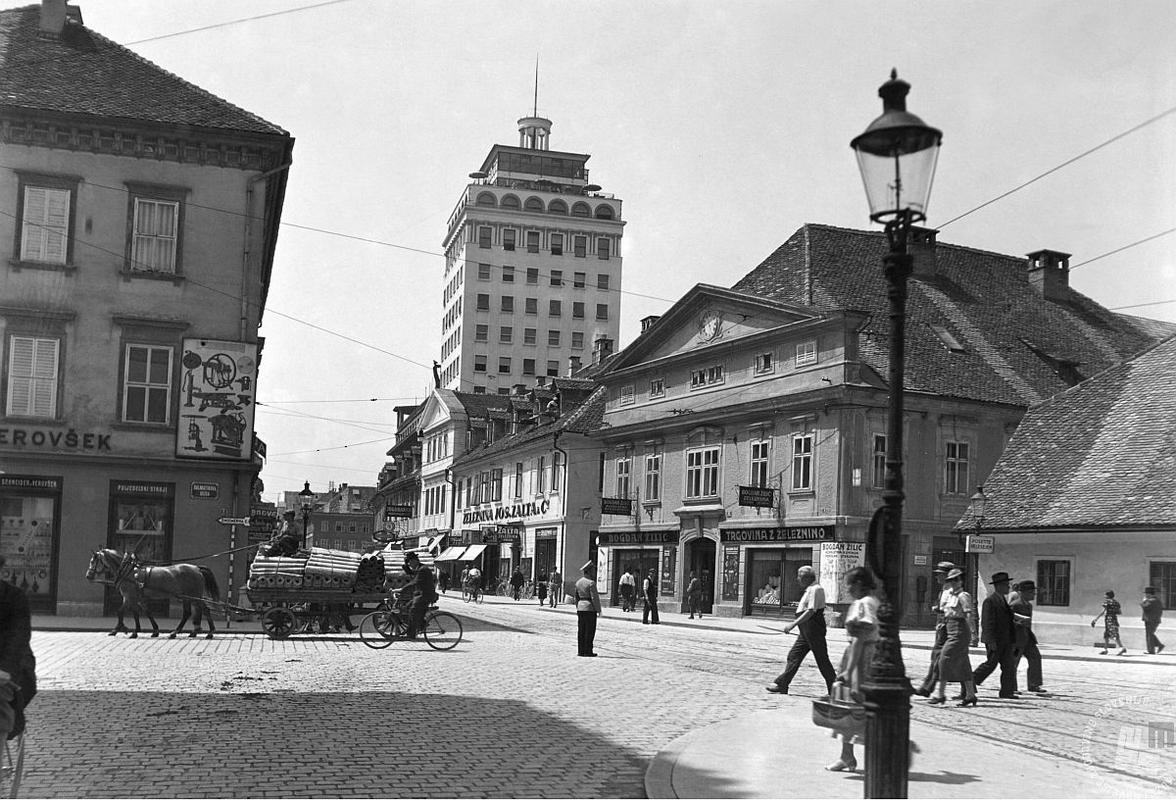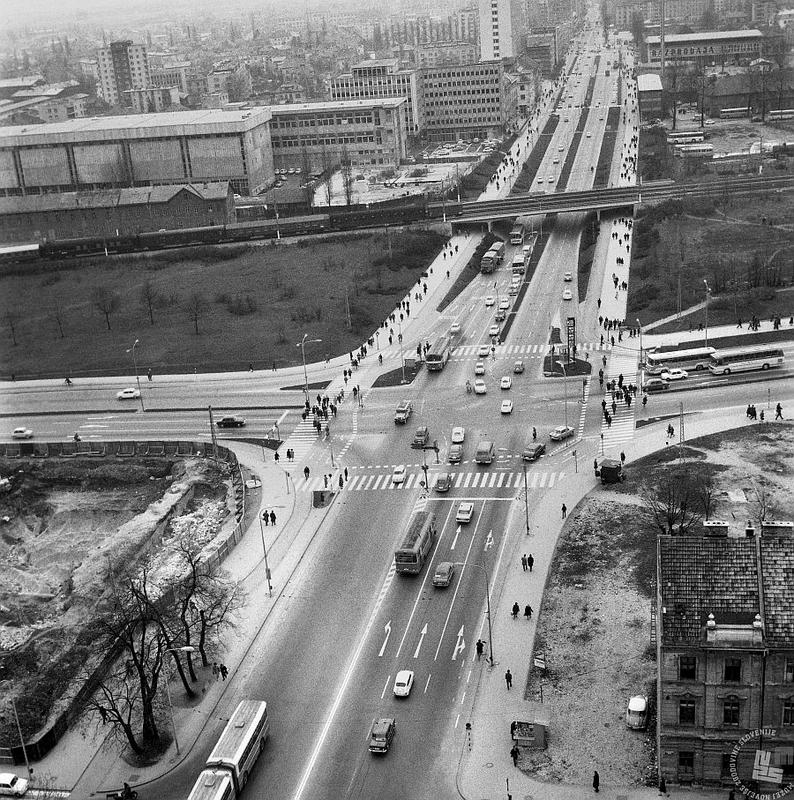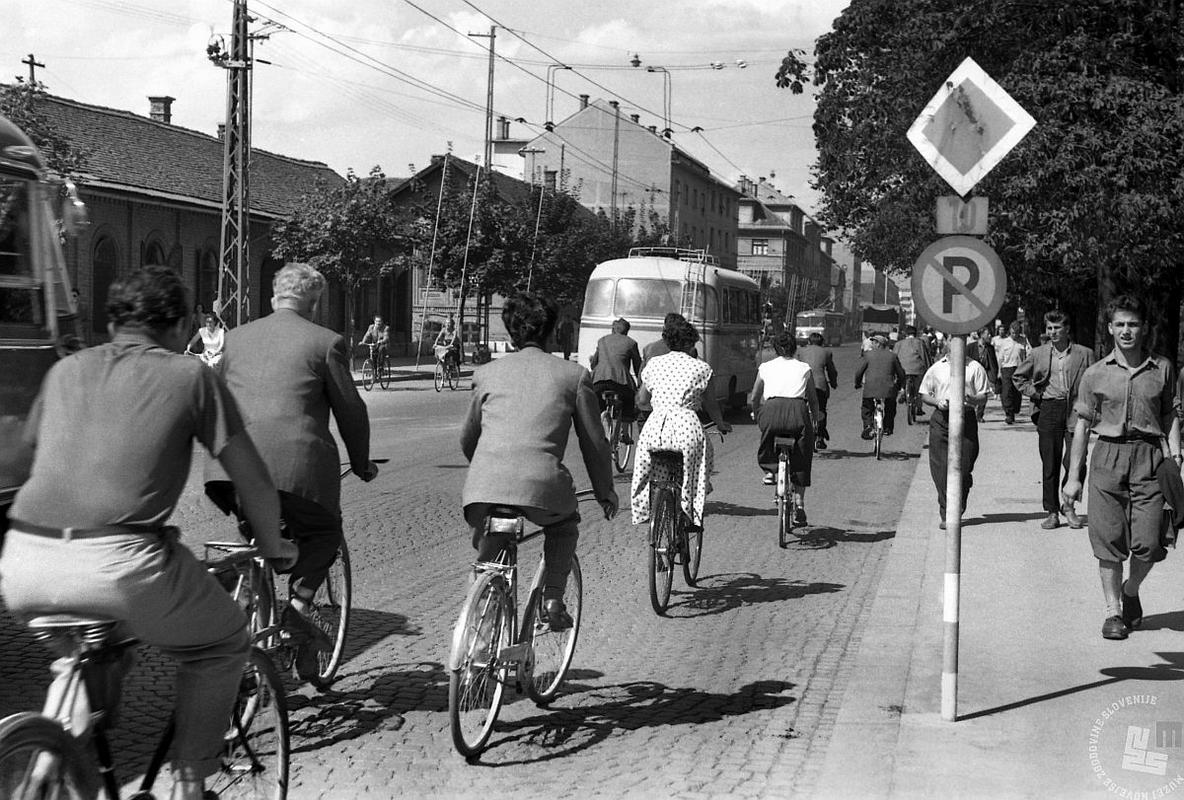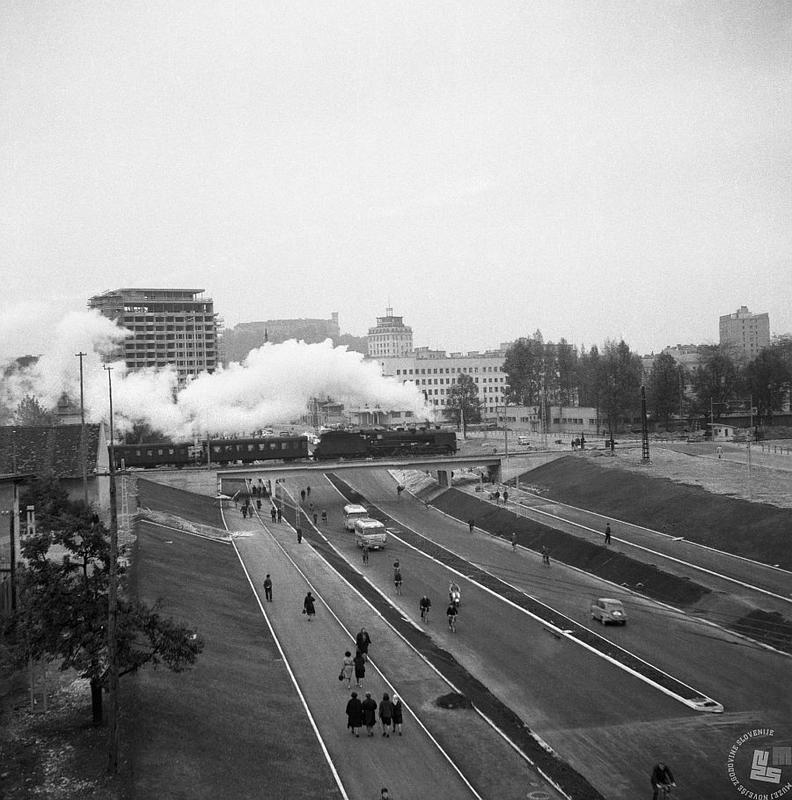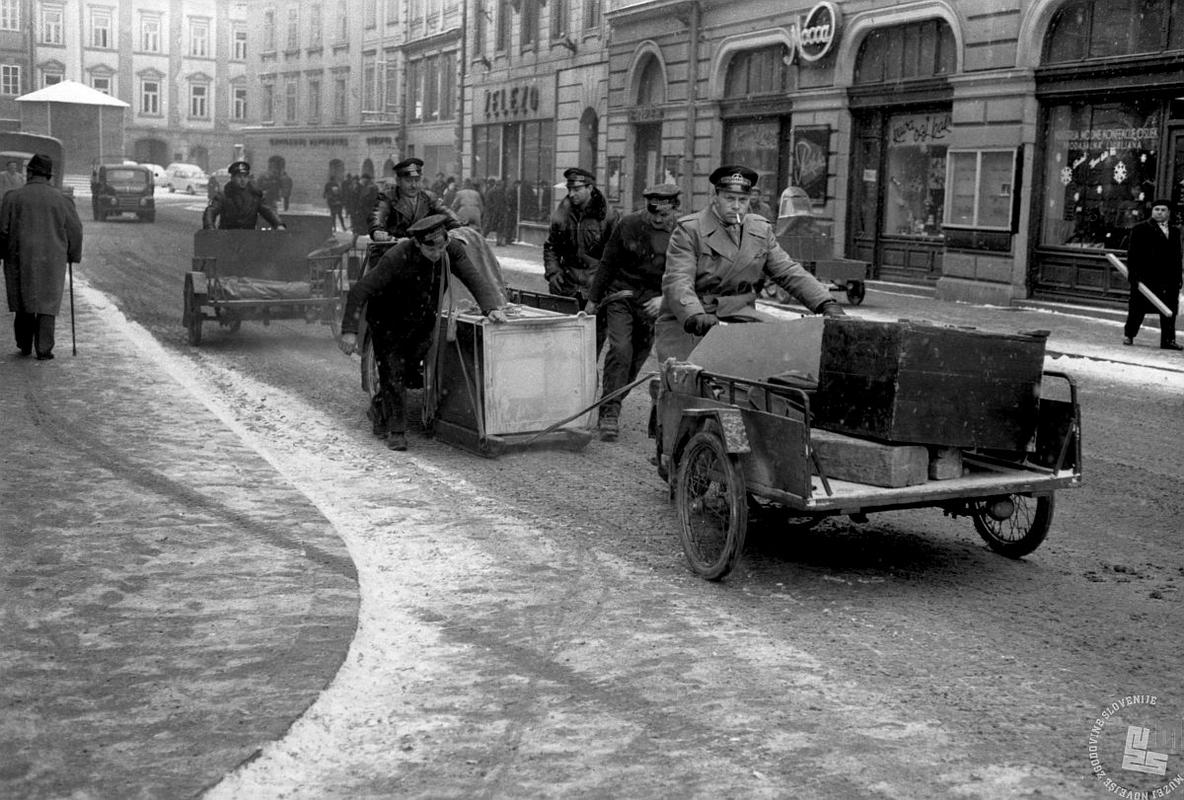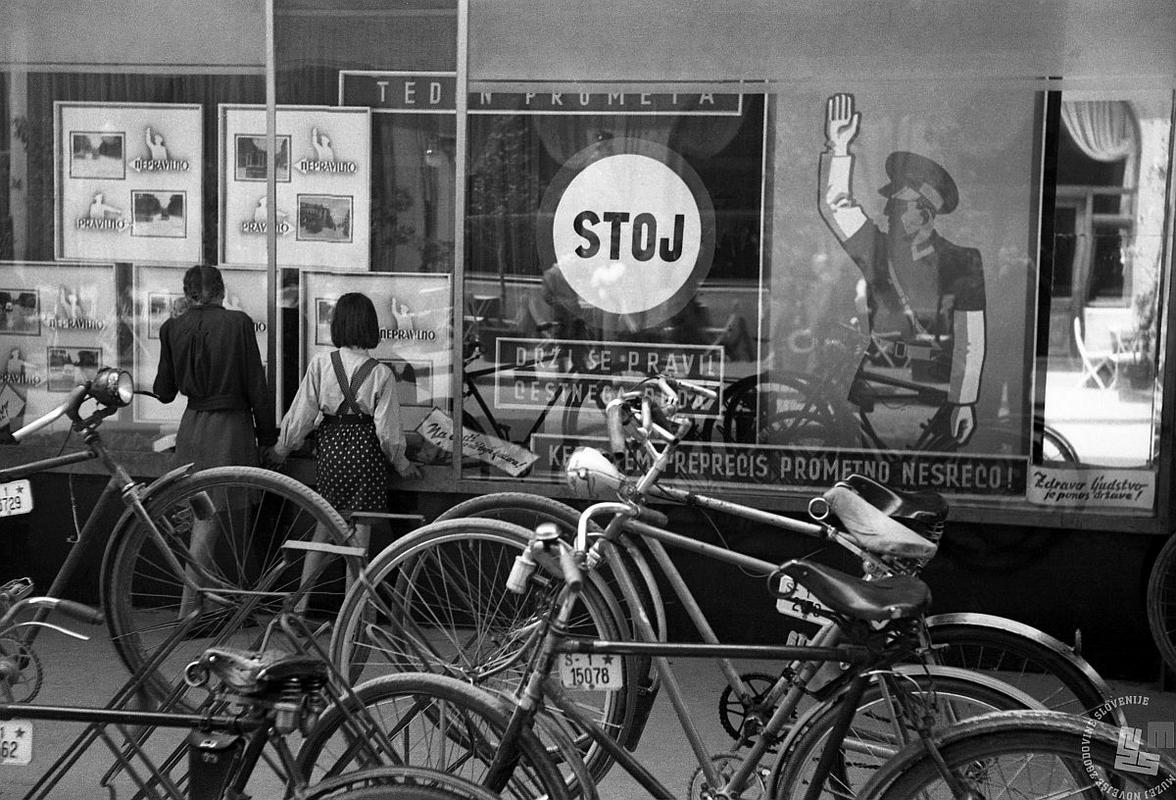
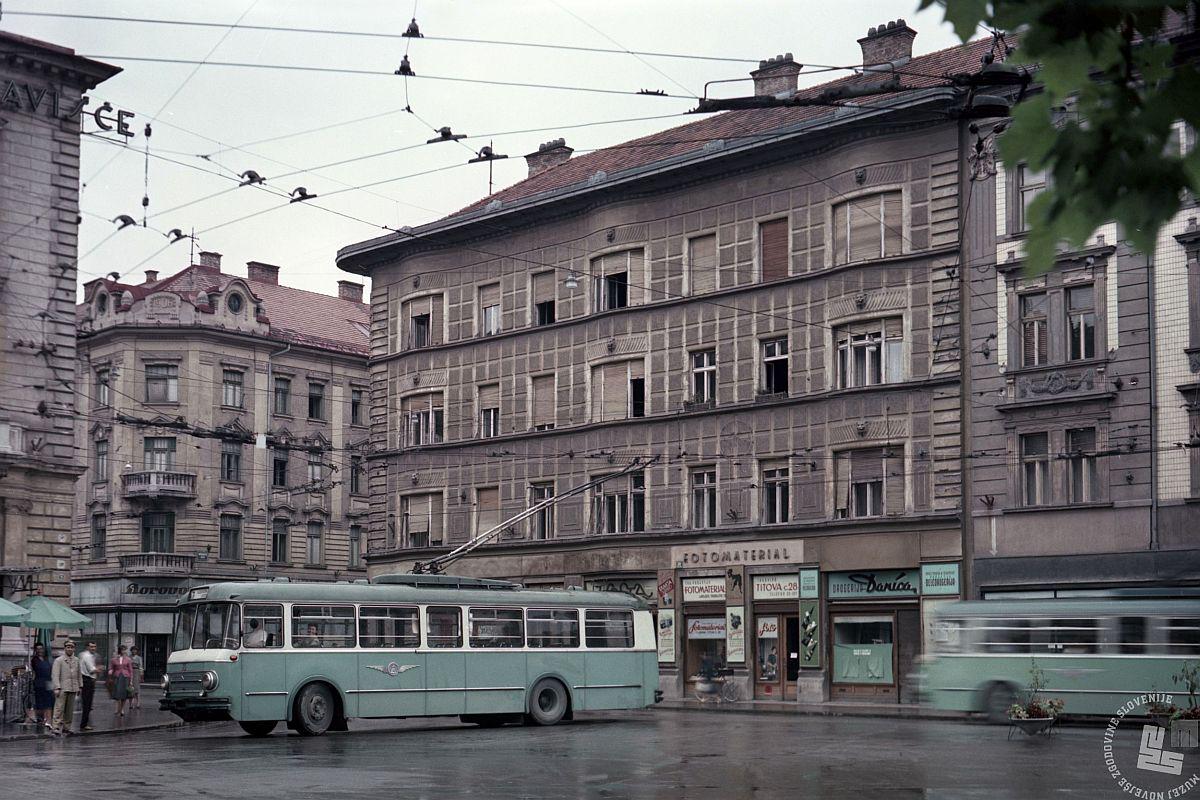
Do we still remember that we used to turn right before the Stritar Street, to the Cankar Embankment, and park at the Fish Square? Of course we do.
The exhibition as a part of the project Ljubljana – the European Green Capital, was prepared by Andreja Zupanec Bajželj in cooperation with the Museum of Recent History, and their photo library where more than two million photographs are stored, two thousands of those on the topic of traffic.
The life in the Slovenian capital changed a lot during the years – and so did the traffic. The images on the photographs by which the photographers in the past century preserved those moments take us into the time when only carriages and trams drove along the streets of Ljubljana. Well, the first car owned by Baron Anton Codelli did drive along those streets already in 1898, but it was a rarity, and an exception to the rule, as were rare and exceptional cases when other cars passed through Ljubljana rising dust and causing bewilderment.
Ljubljana, the capital of the country, was not so long ago the town of horse yokes, carriages – which required diligent cleaning of the droppings left by »engines« pulling them. In the beginning of the past century, more precisely on September 6, 1901, a tramway started operating regularly in Ljubljana, which can be considered the beginning of the era of organized public transport in the city. Fifty years later, on October 6, 1951, the tramway was joined by a trolleybus, the 4.3 kilometre route running from the Ljubljana Exhibition and Convention Centre to Ježica. According to data, until the sixties of the past century there was never any great traffic rush.
While the car traffic kept increasing, some professions slowly disappeared – let's mention porters with their bicycles and carts who used to deliver food bought by citizens at the market, or moving heavy furniture. Bicycle stewards who guarded parked bicycles for small change vanished as well – and, by the way, it would be a good idea to reintroduce that profession. A new business opportunity, perhaps? Traffic kept changing the image of the city, the habits of its citizens, and their lives.
The photography exhibition showing this change is actually a paradoxically nostalgic presentation of the last ... let's say hundred years of life in our capital. It is a sentimental view of the time when we could still drive along the Čop's street through the centre of the city, along the same street which became famous as the shopping area after 1976, when it was closed for traffic, yet today smells much more strongly of fast food than of clothes... That's the reason this exhibition could be considered a reminder to those signing the city urbanistic plans and planning traffic of today. And not only for the capital.
T. Č., translated by G. K.




















































